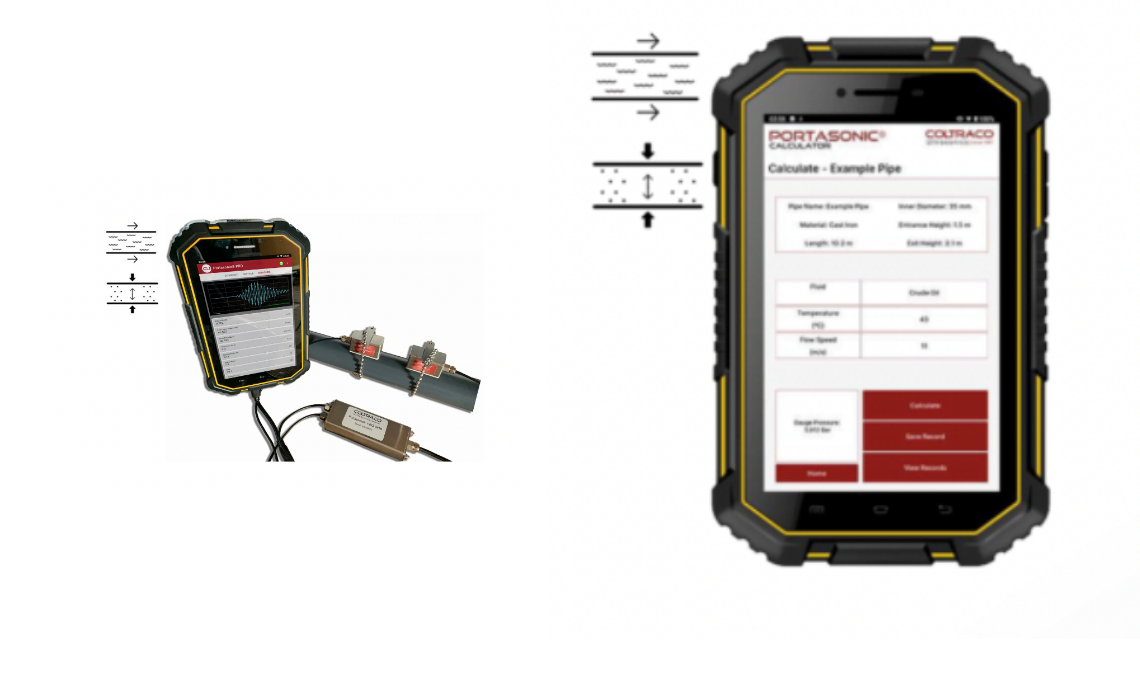
An ultrasonic flow meter is a type of flow meter that uses sound waves to measure the velocity of a liquid or gas. The velocity of the fluid is measured by sending out ultrasound waves and measuring the time it takes for them to bounce back. The flow rate can then be calculated based on the velocity.
Ultrasonic flow meters are often used in applications where other flow meters, such as differential pressure or positive displacement flow meters, cannot be used. This is because ultrasonic flow meters do not require physical contact with the fluid, which makes them ideal for measuring corrosive or abrasive fluids.
How Does It Work?
An ultrasonic flow meter consists of two parts: a transmitter and a receiver. The transmitter emits ultrasound waves, which are then received by the receiver. The time it takes for the waves to travel from the transmitter to the receiver is used to calculate the velocity of the fluid.
The ultrasonic flow meter can be used to measure both liquids and gases. However, it is most commonly used to measure liquids. This is because the speed of sound in a gas is much higher than in a liquid, which makes it more difficult to measure the velocity accurately.
Types of Ultrasonic Flow Meters
There are two main types of ultrasonic flow meters: Doppler and transit-time.
1. Doppler flow meters
Doppler flow meters measure the velocity of a fluid by measuring the Doppler shift of the ultrasound waves. The Doppler shift is the change in frequency of the waves caused by the object’s movement.
2. Transit-time flow meters
Transit-time flow meters measure the time ultrasound waves travel from the transmitter to the receiver. The velocity of the fluid is then calculated based on the time it takes for the waves to travel.
Ultrasonic flow meters are generally more accurate than other types of flow meters. However, they can be affected by temperature and density changes.
Ultrasonic flow meters are most commonly used in the following:
1- Clear liquids
With clear liquids, the transmitted ultrasound waves are not scattered and can be easily received by the receiver. This makes it easier to measure the velocity of the fluid accurately.
2- Dirty liquids
Dirty liquids can cause the ultrasound waves to scatter, which makes it more difficult to measure the velocity accurately. However, ultrasonic flow meters are still often used in applications where other flow meters cannot be used.
3- Corrosive liquids
Corrosive liquids can damage other types of flow meters. However, corrosive liquids do not affect ultrasonic flow meters as they do not come into contact with the fluid.
4- Gases
Ultrasonic flow meters can be used to measure the velocity of gases. However, they are not as accurate as other types of flow meters.
5- Slurries
Slurries are a mixture of solid and liquid particles. Ultrasonic flow meters can be used to measure the velocity of slurries. However, they are not as accurate as other types of flow meters.
Conclusion
With ultrasonic flow meters, you can easily, quickly, and accurately measure the velocity of liquids and gases without coming into contact with the fluid. This makes them ideal for measuring corrosive or abrasive fluids.


